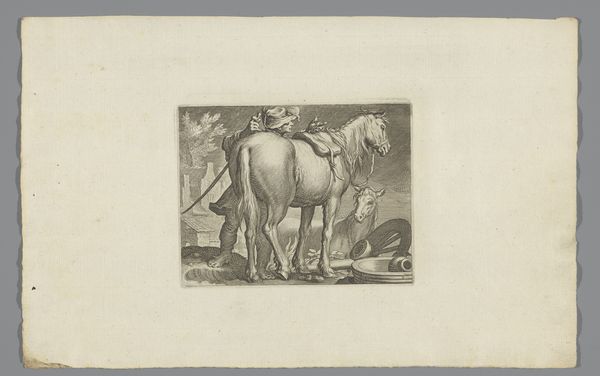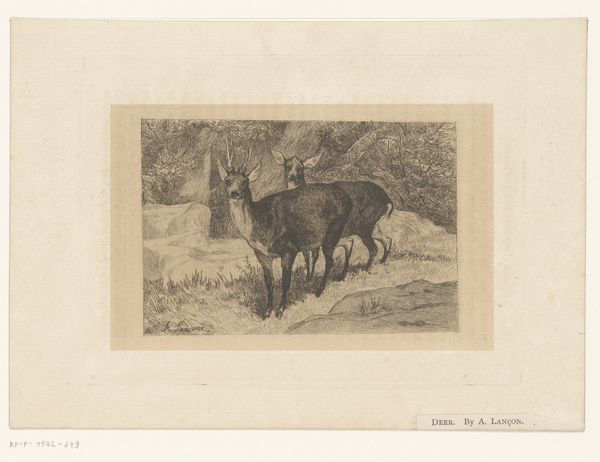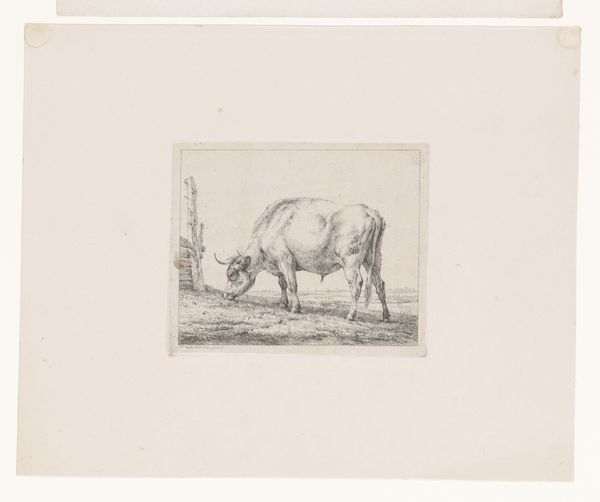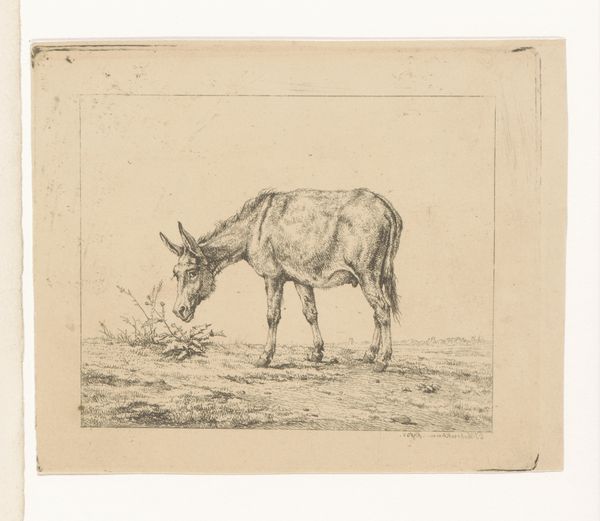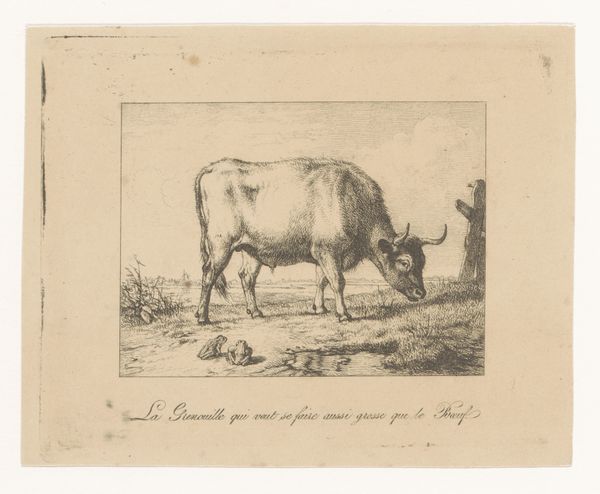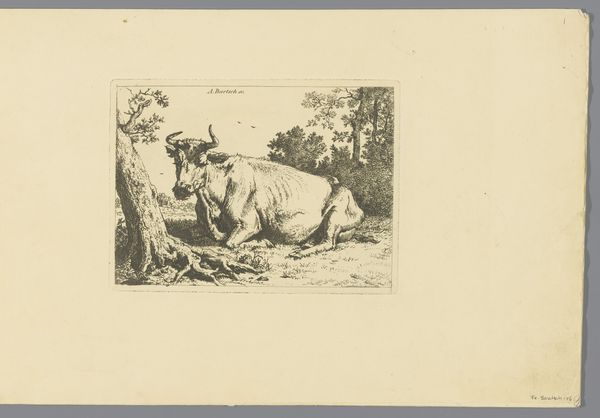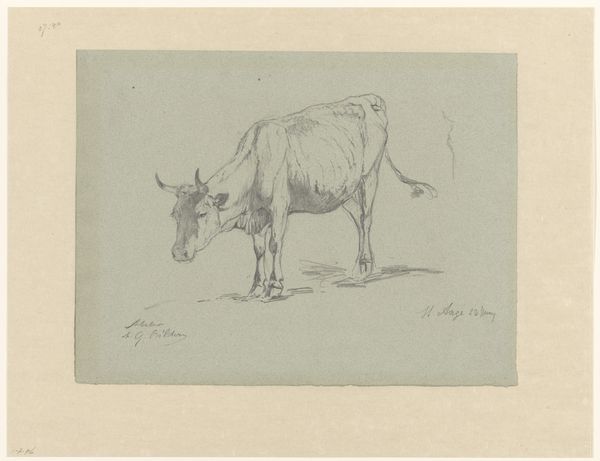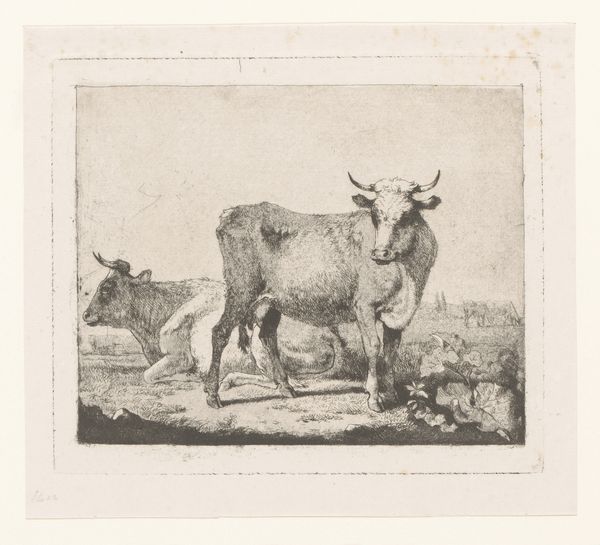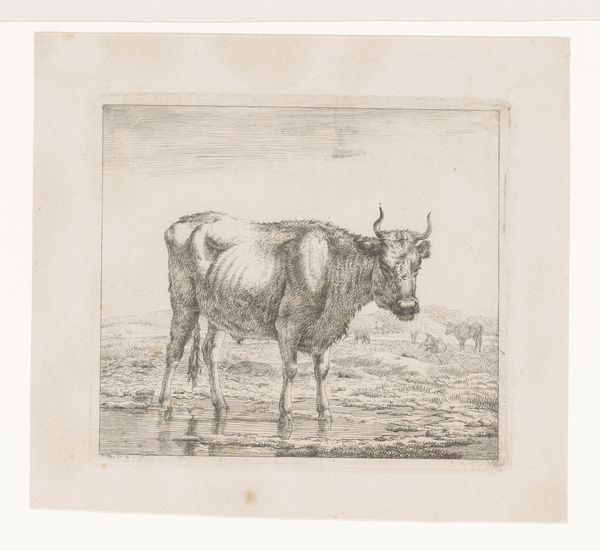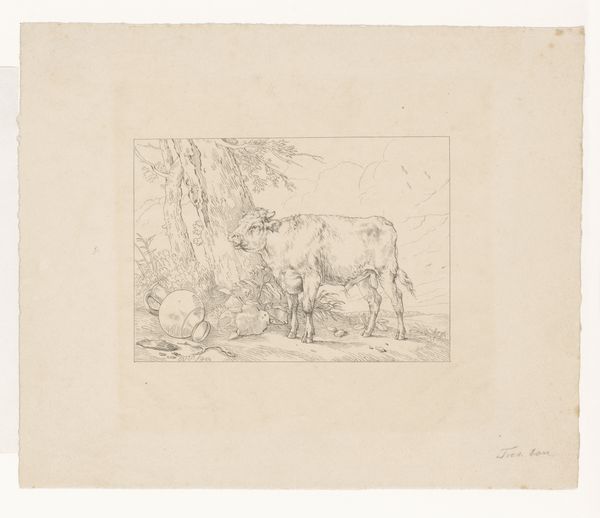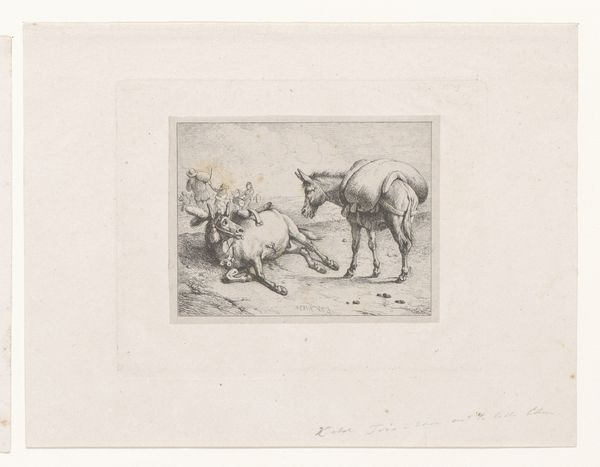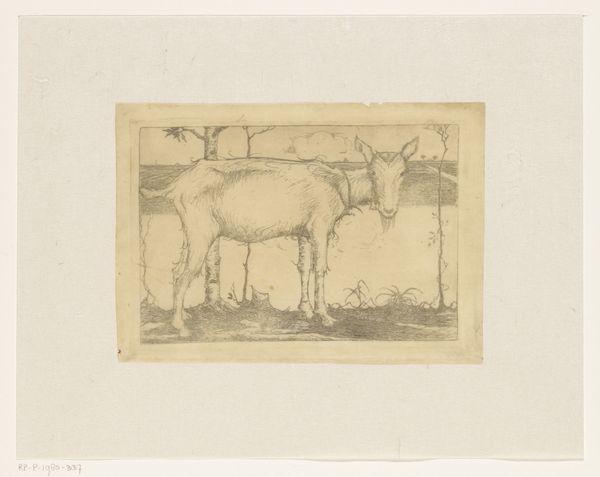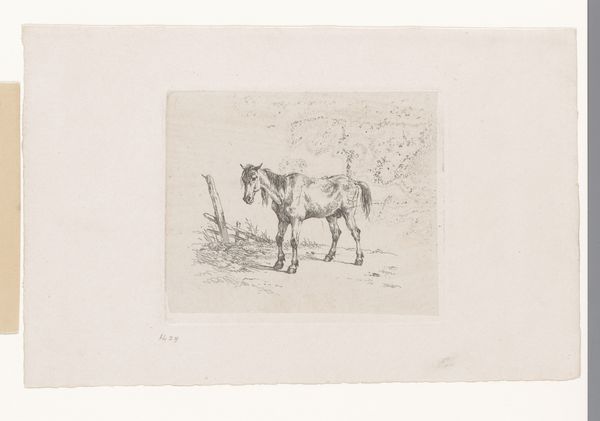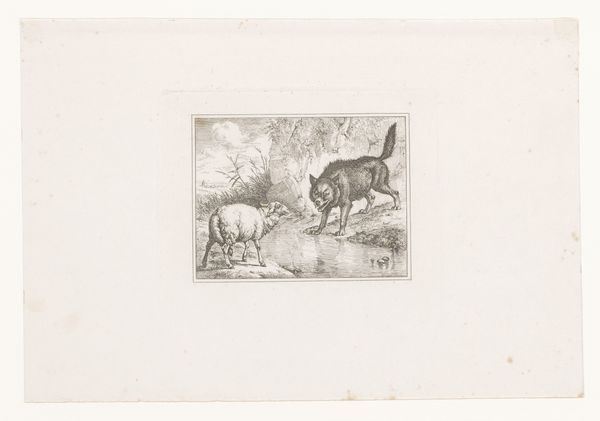
drawing, etching, pencil
#
drawing
#
animal
#
etching
#
pencil sketch
#
landscape
#
romanticism
#
pencil
Dimensions: height 161 mm, width 111 mm
Copyright: Rijks Museum: Open Domain
Curator: Here we have Adam von Bartsch's "Stier van achteren gezien" from 1803, held here at the Rijksmuseum. The title translates to "Bull Seen From Behind." Editor: Immediately, I notice its delicacy, like a fleeting memory captured in fine lines. It feels both powerful and fragile, a study in contrasts. Curator: Precisely. Bartsch worked primarily in etching and often pencil, capturing landscapes and animals. His prints, including this one, display a kind of Romantic ideal of nature. Note how he uses line weight to define form and create depth. The process of etching allows for incredible detail. Editor: It’s remarkable how those fine lines build form. Thinking about the labor of creating an etching – the layering of wax, the acid bath – brings a groundedness to the artwork. How do you think the consumption of art impacted Bartsch's production, given the multiple prints? Curator: It's clear his landscapes met the demand of collectors seeking accessible images. It certainly would impact the style he developed, one both aesthetically pleasing and relatively quick to produce. This one embodies Romantic ideals by focusing on the emotional response one can feel towards the natural world. And with the inclusion of a creature like this magnificent bull, it speaks of strength and, oddly, even vulnerability. I can sense both qualities simultaneously in his posture. Editor: It’s interesting to consider the animal here as labor or livestock. Bartsch elevates it with artistic skill while showing his connection to a social-material reality of the era. How did labor of farming impact Bartsch’s art, do you believe? Curator: I feel Bartsch, in his romanticized view, sought to capture nature outside this. The framing distances it, elevates the animal to be respected as an artwork as if that labor is far away, even ignored. Editor: We all bring different histories when viewing such images, histories woven into the materials used, techniques employed, and yes, into our reactions. It’s like the art never stops being made. Curator: Exactly. It echoes and breathes as new eyes see it, always sparking fresh and evolving interpretations.
Comments
No comments
Be the first to comment and join the conversation on the ultimate creative platform.
